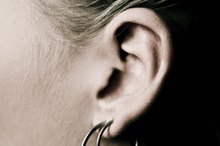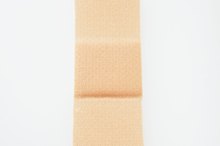How to Treat a Fire Ant Bite
Found in the southeastern United States, fire ants are an aggressive insect. Fire ant stings are painful, itchy and the site of the ant bite is also prone to infection; it's very common for a pustule to form following a fire ant sting. In rare cases, the infected fire ant bite can lead to serious infection and permanent scarring. Learn how to treat a fire ant sting and prevent serious infection at the site of the bite.
Immediately following the fire ant sting, apply some after-bite medication. After-bite medicine is available over-the-counter at the drug store and it will help treat the intense itching and pain that's associated with fire ant bites.
How to Treat an Infected Bug Bite
Learn More
After about ten minutes (once the after-bite has had an opportunity to work) wash the site of the fire ant sting with antibacterial soap like Dial. Scrub the site for two full minutes before rinsing with water. Washing for the full two minutes will dramatically lessen the chance of infection.
Apply betadine, an antiseptic solution. If betadine is not available, isopropyl alcohol or hydrogen peroxide will suffice, but betadine is by far the most effective in preventing and treating fire ant bites and the infection that's often associated with these insect stings. Allow the betadine to air dry. Do not blow on the betadine to hasten drying; this will only contaminate the site of the ant bite with bacteria.
How to Treat an infected ear piercing
Learn More
If the fire ant sting itches intensely, apply a thin coat of hydrocortisone cream.
Apply antibiotic ointment to the fire ant bite and then cover with a Band-Aid.
Repeat steps 1 through 5 three times per day until the fire ant sting has healed. It will typically take about one week for the ant bite to heal, though healing may take longer if the fire ant sting site becomes infected.
Tips
Do not pick at, squeeze or attempt to "pop" the pustule that forms at the site of the fire ant sting. This will only drive the infection deeper into the skin, worsening the infection. Over time, the fire ant bite should be improving in appearance. If the swelling, redness and pain worsens, or if the site of the bite begins oozing a discharge, this indicates an infection and medical attention will be required.
Warnings
Some people will suffer an allergic reaction to a fire ant bite. Fire ant sting allergic reactions can lead to a potentially deadly case of anaphylactic shock. Anaphylaxis from an insect bite is associated with shortness of breath, difficulty breathing, rapid heart rate, sweating and suddenly pale skin color, call 911 and seek immediate medical attention. Diabetics must be especially cautious when suffering a sting from a fire ant. Fire ant bites are very prone to infection and since the ants often bite the feet and legs, this puts the diabetic at risk since diabetes makes a person prone to serious health effects from infections that form on the extremities.
Related Articles
References
- American Academy of Allergy, Asthma, & Immunology. Fire ant allergy.
- deShazo RD, Banks WA. Medical consequences of multiple fire ant stings occurring indoors. J Allergy Clin Immunol. 1994;93(5):847-850. doi:10.1016/0091-6749(94)90376-x
- Kruse B, Anderson J, Simon LV. Fire ant bites. In: StatPearls [Internet]. Treasure Island (FL): StatPearls Publishing. Updated September 25, 2019.
- Seattle Children's Hospital. Fire ant sting. Updated March 14, 2019.
- American College of Allergy, Asthma, & Immunology. Anaphylaxis. Updated January 29, 2018.
- Stokes SC, Quinn JM, Sacha JJ, White KM. Adherence to imported fire ant subcutaneous immunotherapy. Ann Allergy Asthma Immunol. 2013;110(3):165-7. doi:10.1016/j.anai.2012.11.010
- Cleveland Clinic. Insect sting allergies.
- Kliegman, Robert M., Bonita Stanton, St Geme III Joseph W., Nina Felice. Schor, Richard E. Behrman, and Waldo E. Nelson. Nelson Textbook of Pediatrics. 20th Edition. Philadelphia, PA: Elsevier, 2015. Print.
Tips
- Do not pick at, squeeze or attempt to "pop" the pustule that forms at the site of the fire ant sting. This will only drive the infection deeper into the skin, worsening the infection.
- Over time, the fire ant bite should be improving in appearance. If the swelling, redness and pain worsens, or if the site of the bite begins oozing a discharge, this indicates an infection and medical attention will be required.
Warnings
- Some people will suffer an allergic reaction to a fire ant bite. Fire ant sting allergic reactions can lead to a potentially deadly case of anaphylactic shock. Anaphylaxis from an insect bite is associated with shortness of breath, difficulty breathing, rapid heart rate, sweating and suddenly pale skin color, call 911 and seek immediate medical attention.
- Diabetics must be especially cautious when suffering a sting from a fire ant. Fire ant bites are very prone to infection and since the ants often bite the feet and legs, this puts the diabetic at risk since diabetes makes a person prone to serious health effects from infections that form on the extremities.
Writer Bio
This article was written by the CareerTrend team, copy edited and fact checked through a multi-point auditing system, in efforts to ensure our readers only receive the best information. To submit your questions or ideas, or to simply learn more about CareerTrend, contact us [here](http://careertrend.com/about-us).







